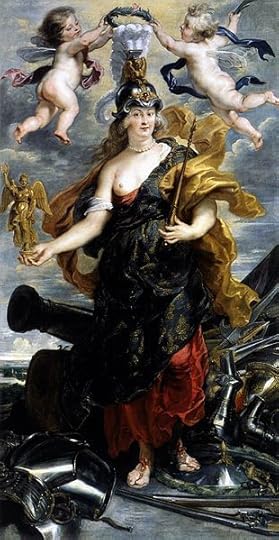 Kalliope’s
Comments
(group member since Aug 28, 2018)
Kalliope’s
Comments
(group member since Aug 28, 2018)
Kalliope’s
comments
from the Ovid's Metamorphoses and Further Metamorphoses group.
Showing 301-320 of 610
 I'm still not finished with this book and will post more this weekend, but yesterday I was struck when I received publicity from a 'cultural travel agency' I follow. They are advertising a trip to Sicily for which they quote Ovid, Book V, and the journey has been titled 'In Search of Persephone'.
I'm still not finished with this book and will post more this weekend, but yesterday I was struck when I received publicity from a 'cultural travel agency' I follow. They are advertising a trip to Sicily for which they quote Ovid, Book V, and the journey has been titled 'In Search of Persephone'.https://pausanias.es/es/component/jev...
 Roger wrote: "Oh, don't consider; call the theater now
Roger wrote: "Oh, don't consider; call the theater now..."
Thank you for the recommendation.. I will look into the tickets. I am no great fan of Teatro Real. It is small, so the tickets are frightfully expensive even with poor sitting, and the productions are not always a success.
But I will investigate.
 I have just received a music magazine to which I am subscribed, and on the back cover there is an add for
I have just received a music magazine to which I am subscribed, and on the back cover there is an add forCavalli's La Calisto.
I will consider purchasing tickets.
https://www.teatro-real.com/en/season...
 We come to another major subject for artists - sculptors and painters.
We come to another major subject for artists - sculptors and painters.Jim already mentioned Bernini's.
Here is the complete sculpture.
Bernini. The Rape of Proserpina. 1622. Galleria Borghese, Rome.
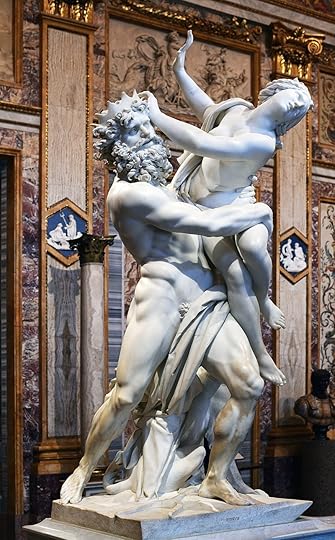
The paintings can handle more aspects of the full narrative. The following two samples have developed a more complex scene.
Joseph Marie Vien. Abduction of Proserpina. 1762. Grenoble Musée des Beaux-Arts.
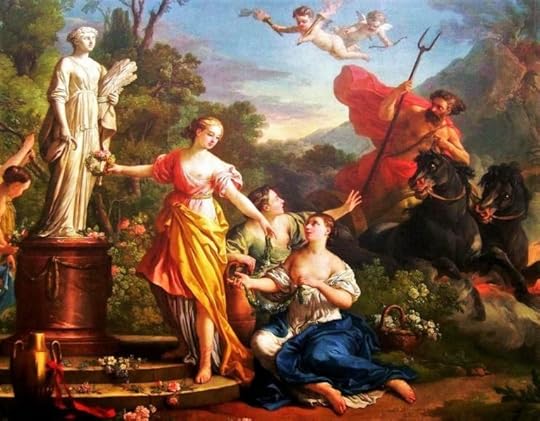
Jan Brueghel the Elder. 1610. Private collection.
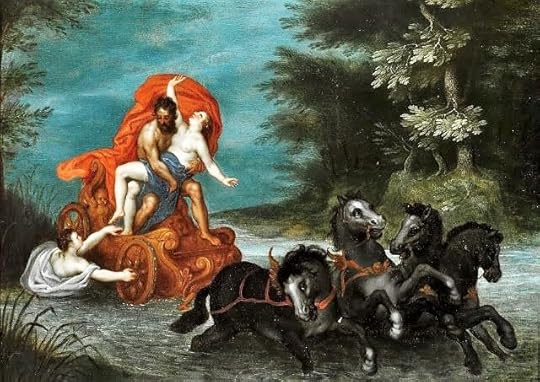
And I have found this incredible portrayal by the brother of the painter above. It is in the Prado but I don't recall having ever seen it. They have opened new rooms for Flemish art and it may be there. Next time I am in the museum I will look for it. Of course it brings memories of the hell scenes by Bosch.
Pieter Brueghel the Young. End 16C, early 17C. Prado.

But there is this very beautiful rendition of just Proserpina with her pomegranate.
Dante Gabriel Rossetti. Proserpina. 1873-77. Tate Britain, London.
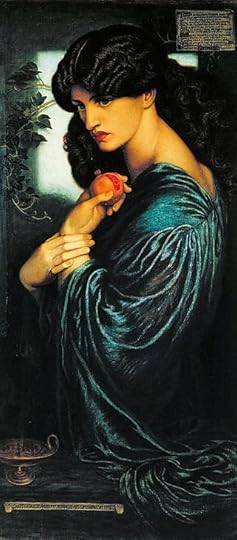
 Roman Clodia wrote: "How interesting that in the metamorphosis of Atlas there seems to be two phases: first he's turned into a mountain through the power of Medusa's head, but then 'he grew and he grew and he grew (so the gods had decreed)' (661) till he becomes the Atlas range.."
Roman Clodia wrote: "How interesting that in the metamorphosis of Atlas there seems to be two phases: first he's turned into a mountain through the power of Medusa's head, but then 'he grew and he grew and he grew (so the gods had decreed)' (661) till he becomes the Atlas range.."Yes, an interesting explanation for the growth of mountains into ranges..
I was somewhat amused to witness huge Atlas feeling intimidated by PERSEUS.
 Ce Ce wrote: "
Ce Ce wrote: "Gian Lorenzo Bernini..."
This is a wonderful Bernini, CeCe.. Thank you, I did not know it.
 Roman Clodia wrote: "An important Renaissance reception of the Perseus/Andromeda story, specifically the rescue from a sea-monster comes in Ariosto's Orlando Furioso, canto 10. There are some direct appr..."
Roman Clodia wrote: "An important Renaissance reception of the Perseus/Andromeda story, specifically the rescue from a sea-monster comes in Ariosto's Orlando Furioso, canto 10. There are some direct appr..."RC, I had also thought of the Angelica and Ariosto's tale.
The Ingres painting was visiting here not too long ago. And I am more familiar with Ariosto's stories in Opera than the Ovid ones.
 I looked to see whether there was any painting of Pyreneus killing himself. I have not found anything.. Interesting that that section of the story has not interested painters. Instead they preferred to show the Muses escaping.
I looked to see whether there was any painting of Pyreneus killing himself. I have not found anything.. Interesting that that section of the story has not interested painters. Instead they preferred to show the Muses escaping.James Thornhill (ca 1675-1734). Bristol City Museum.
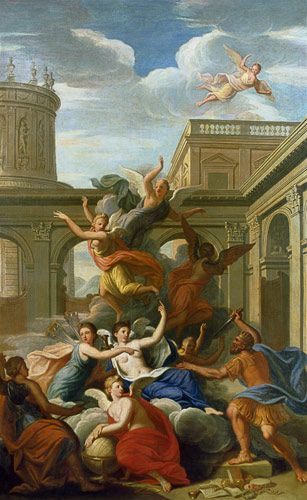
 The Muses.. of course many times rendered by artists. The one collection that comes to my mind, is the series of statues that used to belong to the Christina the Queen of Sweden and which are now in the main Entrance Hall in the Prado:
The Muses.. of course many times rendered by artists. The one collection that comes to my mind, is the series of statues that used to belong to the Christina the Queen of Sweden and which are now in the main Entrance Hall in the Prado:Anonymous. 130-140 AD. Prado (but completed and restored by Ercole Ferrata).
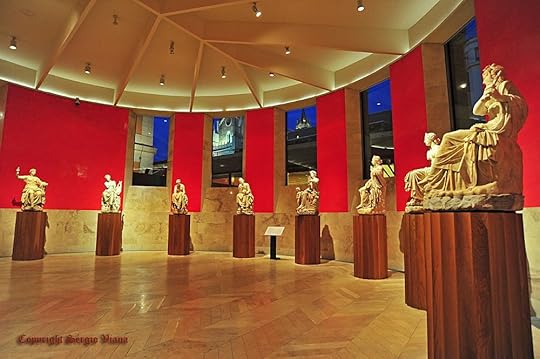
Originally nine, but only eight have survived. Originally in Hadrian's villa in Tivoli.
 Jim, I am posting your Bernini image.
Jim, I am posting your Bernini image.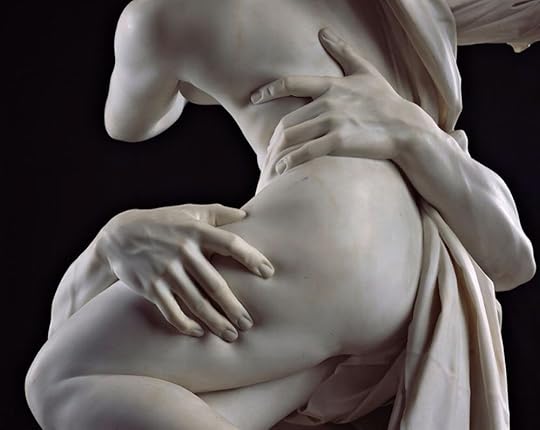
But before the Proserpina story, there are a couple of incidents that have been painted.
 Looking for images of Polydectes, I found this one that could apply to any scene in the second part of the battle.
Looking for images of Polydectes, I found this one that could apply to any scene in the second part of the battle. Leonart Bramer. 1660s. Private collection.

 Jim wrote: "The metamorphosis wrought by Perseus of flesh into marble causes me to consider the reverse: Bernini made it appear that he had succeeded iin doing so with his sculpture of "The Rape of Proserpina"..."
Jim wrote: "The metamorphosis wrought by Perseus of flesh into marble causes me to consider the reverse: Bernini made it appear that he had succeeded iin doing so with his sculpture of "The Rape of Proserpina"..."Excellent, Jim... yes, the goal of Bernini was to make the marble look like flesh.
I recently saw a documentary on Bernini produced by the Borghese gallery. It was extraordinary. I have ordered the book but it looks like I may never get it.
The book is not in the GR database yet.. I will enter it later on.
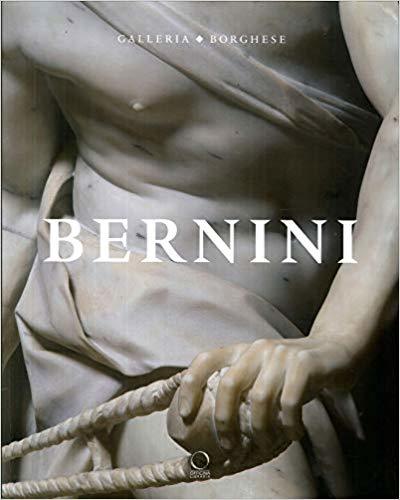
I was struck by Phineus's sentence He saw statues in different poses, recognised them as his own men, called each by name and begged for help.... They were marble.
Ovid has transformed a gory scene into a museum hall. Haha...
 As one of the themes I am tracking is that of loss of speech, even in this very bloody battle there is one such instance - in a way linked to a punishment. Similar to those endured by informers, this time it is to a liar.
As one of the themes I am tracking is that of loss of speech, even in this very bloody battle there is one such instance - in a way linked to a punishment. Similar to those endured by informers, this time it is to a liar.This is Nileus, who had lied about his origin, is interrupted in the middle of his speech and cannot finish his sentence.. and is left with his stony open mouth.
 Roman Clodia wrote: "
Roman Clodia wrote: "Phineus gives his excuse as 'I've come to avenge the theft of my bride' (1..."
Thank you for pointing out these very specific parallels with the Aeneid. I would not have realised.
 Simpson also points out that in this parody, Perseus is trespassing the rules of the heroic code in his vindictiveness - he is too brutal with fallen enemies.
Simpson also points out that in this parody, Perseus is trespassing the rules of the heroic code in his vindictiveness - he is too brutal with fallen enemies. It is also pointed out in my edition that when Perseus goes back to Argus and puts back his grandfather in the throne, it is sort of forgotten that Acrisius had opposed Bacchus and had also not believed that Perseus was the son of a god.
So it seems that Acrisius so far is escaping from Bacchus's wrath - unlike all the others (Pentheus and Minyas's daughters).
 Once Perseus feels a bit tired and decides to pull out the trick out of his hat, the Gorgon's head, the gore finishes and instead we can imagine a gallery of sculptures... Two hundred of them, in marble.
Once Perseus feels a bit tired and decides to pull out the trick out of his hat, the Gorgon's head, the gore finishes and instead we can imagine a gallery of sculptures... Two hundred of them, in marble.Something like this?
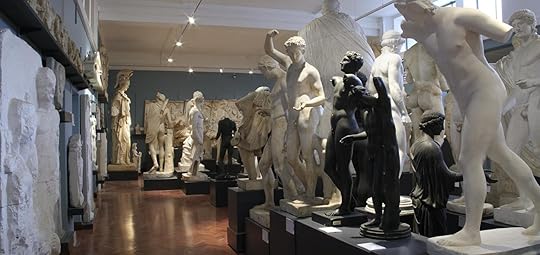
 I cannot imagine many paintings coming out of the initial battle scene, except for the inclusion of the figure of Bellona, a war goddess associated with Romulus and Remus.
I cannot imagine many paintings coming out of the initial battle scene, except for the inclusion of the figure of Bellona, a war goddess associated with Romulus and Remus.We have a few depictions of her, even if they are not strictly Ovidian.
Alessandro Turchi (1578-1649). Bellona with Romulus and Remus. Private (last seen in auction).
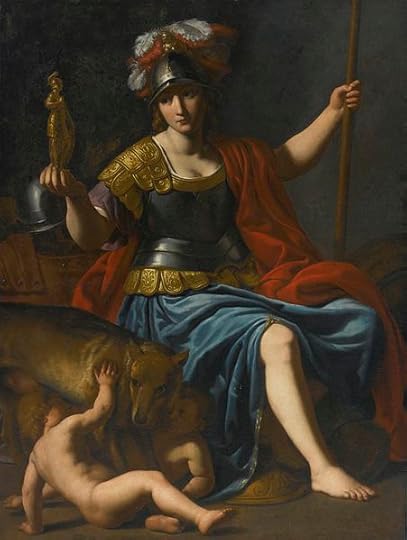
The most famous of all:
Rembrandt. Bellona. 1633. Met, NY.
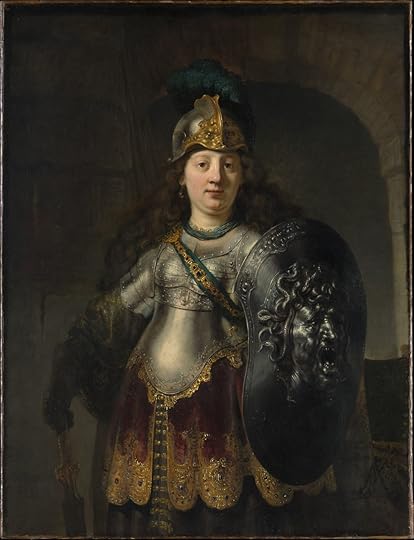
A not very heroic looking goddess, a bit homely... but charming.
And then somewhat off the main subject, there is Rubens's cryptic portrait.
Rubens. Maria de Medici as Bellona, 1621-25. Louvre.
